Marketing for retail has never been easier thanks to so much technology and advancement in the business world.
The retail industry is one of the most competitive markets so the right strategies can make all the difference in boosting sales. The marketing mix should be the key focus when deriving a strategy and focusing on it:

Choosing the right pricing strategy
When marketing for retail, great sales don’t always mean great profits. If your costs are too high and you’re hardly breaking even, then your efforts are going to waste.
Since many brands face this problem, your pricing strategy may be an effective solution to counter this.
Take a look at the most common pricing strategies and assess which is most suitable for your business:
#1. Value-based Pricing
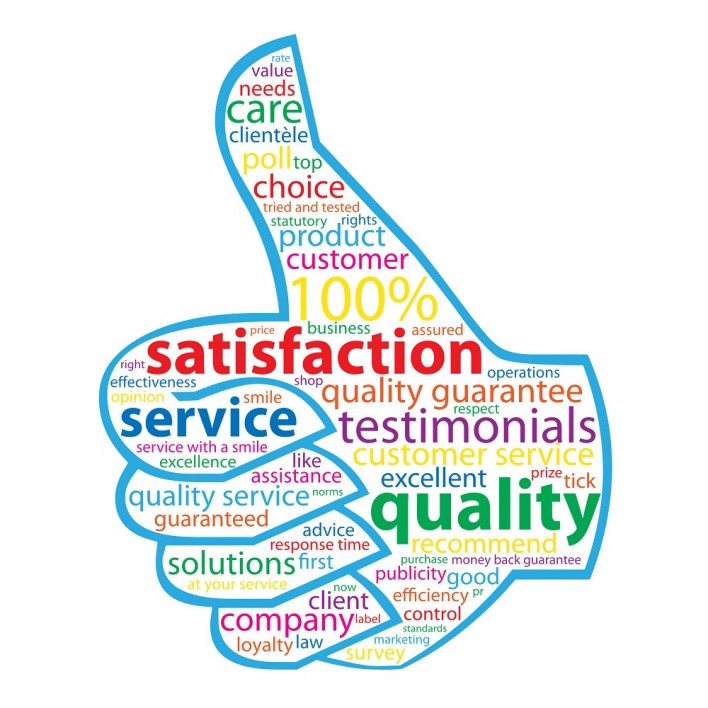
Value is an intangible asset that you’re offering to your customers. Value could be the status symbol, the appearance or any non-physical aspect of your product/service.
If you’re in the clothing industry, you’ll notice this is a very common phenomenon. You could buy gloves at the dollar store for well, just a dollar, or you could go to Macy’s and buy similar gloves for $20. The difference? Maybe a slight difference in quality and Macy’s trusted brand name.
Similarly, you could buy a handbag from Chanel priced at $500 or a similar one from Burberry at $2000! That’s 4 times the difference perhaps simply due to the status symbol.
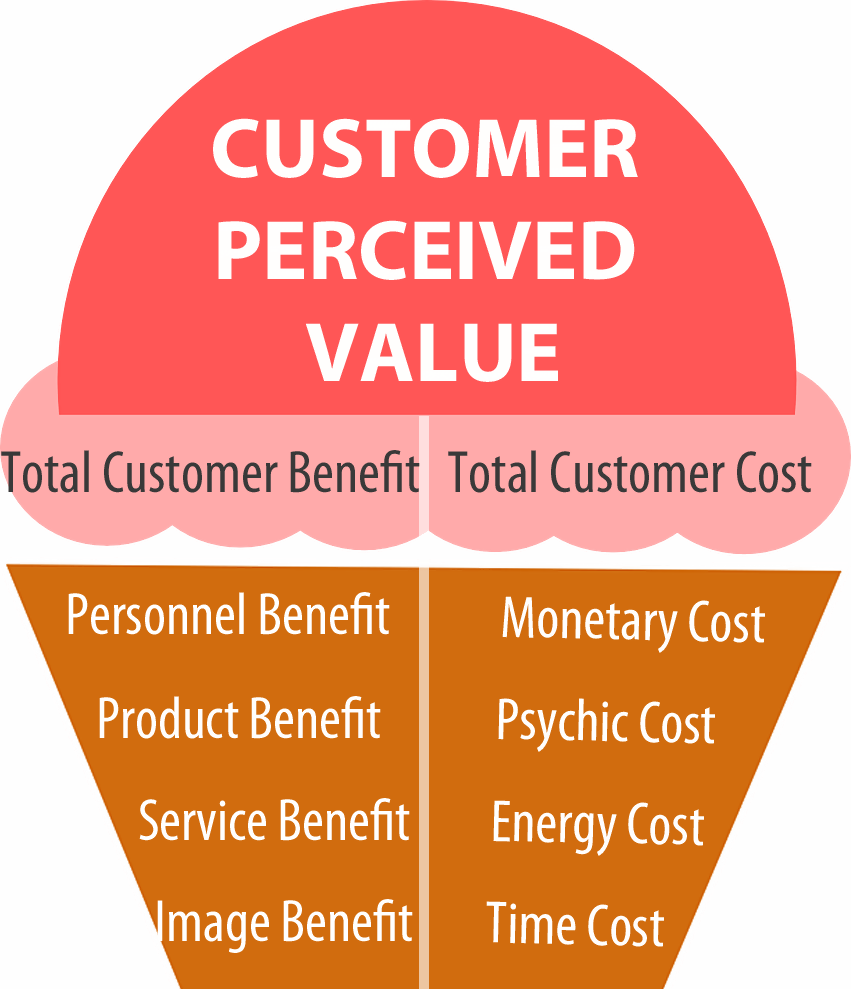
If you have a well-reputed brand name where people come to shop just so that they have the satisfaction of owning something from your company (e.g. owning Louboutin’s exclusive, red-soled shoes), only then should adopt this strategy.
The value-based strategy is the most commonly adopted strategy in retail. If you are considering adopting it, do the following:
- Identify how much your consumers value your product in monetary terms
- Find out the price of the next best option for your customers i.e. what your customers would buy if not your product
- List all of the ways that your offering is better. Estimate how much you think these differences are worth to your customers.
- List all the ways that the second-best offering is better. Be very honest here. How much do you think these are worth to your customers?
- Calculate the best price based on the differences between the two.
#2. Cost Plus Pricing
This pricing strategy is self-explanatory. Prices are set based on the total cost of the product plus an extra percentage for effort/profits:

On paper, it seems like the most rational approach. However, in the retail industry, there is so much competition that it can sometimes be impossible to adopt this approach.
This pricing strategy is best suited to the Business-to-Business (B2B) Market because there are a small number of businesses and price does not have a direct effect on demand.
#3. Competitive Pricing
Another commonly adopted pricing strategy in the retail industry is competitive pricing.
As the name suggests, prices are set based on competitors’ prices i.e. brands selling similar products.
This strategy is effective in a market where there a lot of brands selling parity products. Take Coke and Pepsi for example:
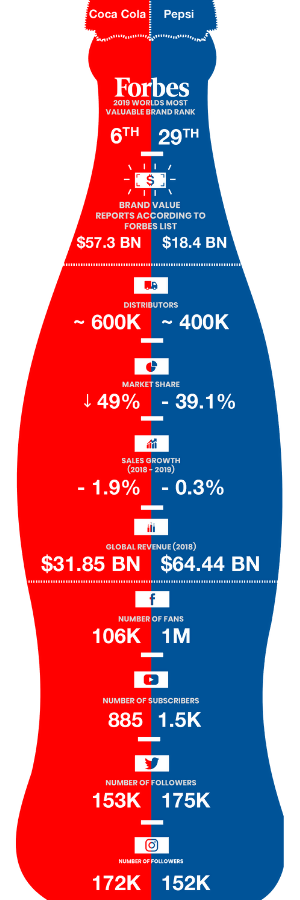
The two multinationals have been in a fierce battle for market share against each other since the start. The products of the two beverages barely differ from one another because they are so similar that if consumers notice even a slight difference in price, they will switch to the cheaper alternative.
#4. Price Skimming
This pricing strategy can only be taken advantage of in two situations: either you are a market leader or you operate in a monopoly market.
Price skimming is the concept of introducing an initially higher price for a product and then lowering it gradually.
Take the ps3 for example. It was initially introduced at $600 but it is now priced lower than $200 as models with newer technology have replaced it.
Brands often charge higher prices for innovative products in markets that have no competitors or in a market where competitors have yet to unveil such technology.
Similarly, there’s been an ongoing debate about Apple using price skimming. The tech giant has often been accused of extorting customers by charging high prices for its phones.

The refurbished iPhone X is now available at $600-$800, as opposed to the original price that it was launched at.
Competitors like Huawei and Samsung are catching up and critics argue that Apple is no longer able to take advantage of the price skimming strategy as it still charges premium prices for its phones but it is seeing a declining market share in many countries as other brands are offering the same products at lower prices.
#5. Penetration Pricing

You’ll definitely need this strategy if you’re entering a competitive market.
Because of limited funds, little customer relations and brand identity among other reasons, it can be extremely difficult for brands to establish a foothold in the market.
Luckily, the penetration pricing strategy is a great way to boost sales and survive in competitive markets.
Again, taking a look at the phone industry, we can see that Apple, Samsung and Huawei are the leading brands. There are hundreds of other brands that are competing for market share as well, but the one brand which did an exceptional job was OnePlus.
The brand was launched in just 2014 and it has gained a significant share of the market i.e. 10% within just 5 years, making it one of the Top 5 brands of the smartphone market.
This success owed to one simple reason: the brand’s pricing strategy. OnePlus offers high-end phones with the same technology as competitors but at an incredibly lower price.
Its phones cost $200-$300 less than all the leading brands, which means consumers can save a significant amount of money by opting for OnePlus while enjoying the same features.
If you are new to the market, it is perhaps best to adopt this strategy if there is existing competition.
Promotion Strategies
#1. Guerilla Marketing
At times, standing out of the crowd is the only way that you can get consumers to notice your brand.
This is because consumers see so much advertising around them now – billboards, social media, TVCs, SMS, email, flyers and whatnot, that they zone out most of it.
Unless it is really interesting.
Everybody remembers the McDonalds campaign back when it painted a huge MacFries on a pedestrian sidewalk:
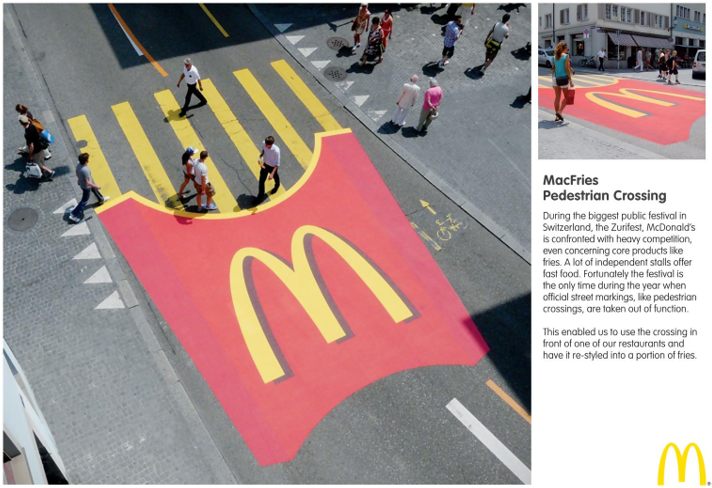
Similarly, the Copenhagen Zoo had heads turning with its innovative, 3D bus design:

A good promotional campaign such as these will ensure that your business is the only business anybody is talking about. It’s a great tool for lead generation and increased brand awareness.
#2. Take advantage of Google
The best thing about digital marketing is that it is cheap, it is easy and it is effective.
Google offers a number of different advertisement tools that you can take advantage of:
- Google AdWords
When you search for a product/service on Google, you’ll notice links on the top are labelled ‘ads’. Instead of putting endless efforts in improving your SEO to rank higher on Google, an alternative is to pay to get your website on the top of the results page.
With Google AdWords, you’ll also be able to track how much the campaign is costing you as well as how much it is earning:
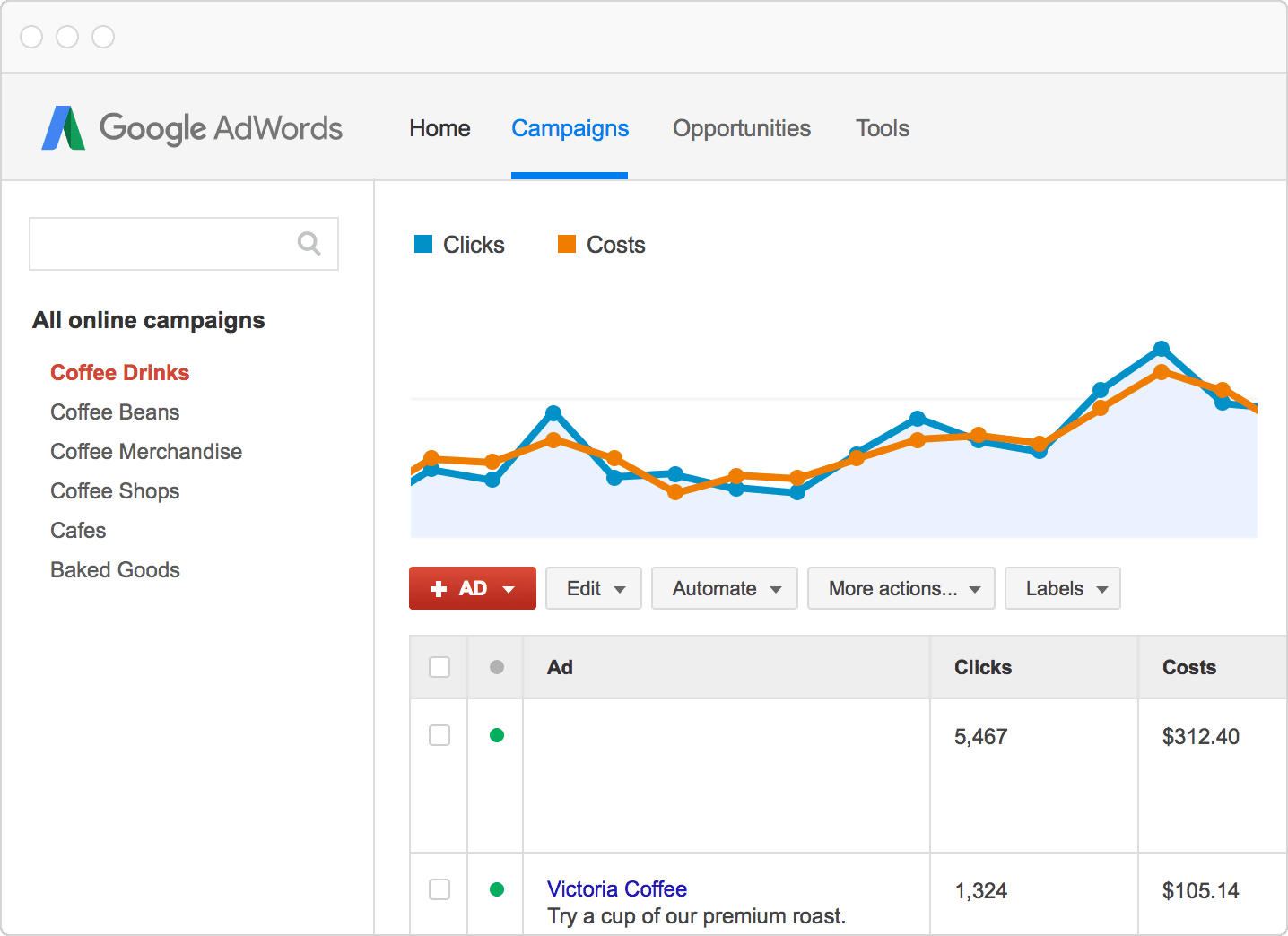
- Google my Business

You’ve often noticed this sidebar when you search for a specific business. This helps customers find an entire summary of the business – contact details, reviews, location etc all in one place.
All you have to do is set up Google My Business on your Google Drive. It’s free and it’s a great tool to create accessibility for customers!
- Google Trends

Need to make smarter keyword choices? Use Google Trends! This tool will help you keep up with what’s trending and what will work best for your business.
- Google Alerts

Google Alerts is a tool for notifications about any new content about your business on the internet. This will help you keep a track of your business’s reputations and what consumers perceive about your brand.
- Google Analytics

Google Analytics is a great tool to track your ROI and see how well your strategy is performing. This also helps to identify strengths and weaknesses which can then be improved.
#3. Understand the importance of seasonal peaks
When marketing for retail, this is a crucial aspect to consider for your strategy.
A clothing brand knows that at the start of a season, most customers will require a new wardrobe. This means they will make sales in any case.
However, at the end of a season, consumers are preparing for the next one, so they won’t be seen shopping for last season’s clothes.
Unless there is a great incentive.
Marketers need to promote products and offer discounts during the off-season when sales are at an all-time low.
While this period is longer for the clothing industry, it’s usually shorter for restaurants.
Off days are usually weekdays and afternoon hours outside of lunch so those are the key times when marketers need to provide customers with an incentive to visit.
You’ll notice most local cafes or food chains offer discounts in the middle of the week i.e. Tuesdays, Wednesdays and Thursdays when they except a low influx of customers.
Similarly, you need to understand which category your business falls in and provide incentives and offers at just the right time to boost sales.
During seasonal peaks, businesses already enjoy maximum sales so offering lower prices will only hurt revenues which could have been generated otherwise.
#5. Smart Remarketing
This is one of the most underutilised concepts, perhaps because it requires extensive knowledge about your customers’ purchase patterns.
Suppose a customer purchases a tanning lotion. A 250 ml lotion is likely to last up to 2-3 months, so how do you get the customer to repeat the purchase?
Send out a reminder text after 2 months telling them to buy the lotion before it finishes, or else they won’t get the perfect tan!
Another way to create a sense of urgency is to tell your customers that the stock is finishing and they must purchase it while it lasts. Make the offer sound irresistible and offer an incentive if you feel that the customer may not repurchase it otherwise.
Conclusion
Retail marketing is a concept that can boost sales significantly if implemented correctly. As a retail marketer, you need to invest a lot in this area.
With the ever-changing environment, there are new marketing techniques being introduced every single day. Taking the lead and incorporating the newest techniques into your strategy will give you an edge over competitors.
Read more about Business Marketing Tips that are so easy it’ll surprise you.
